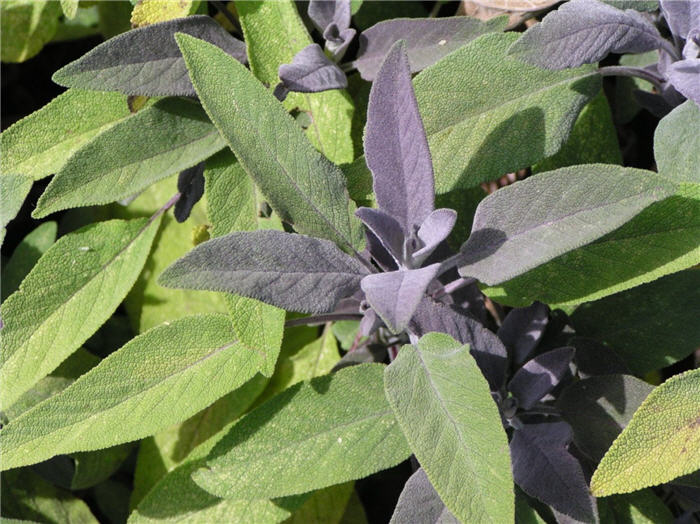| Botanical Name: Salvia officinalis 'Purpurascens' | |
| Common Name: Purple Garden Sage |

-
Anatomy
-
Culture
-
Design
Plant Type
Broadleaf Evergreen, Shrub, Perennial
Height Range
1-3'
Flower Color
Blue
Flower Season
Summer
Leaf Color
Grey Green, Purple
Bark Color
Grey
Fruit Color
n/a
Fruit Season
n/a
Sun
Full
Water
Medium
Growth Rate
Moderate
Soil Type
Sandy, Clay, Loam, Rocky
Soil Condition
Average, Poor, Well-drained, Dry
Soil pH
Neutral, Basic
Adverse Factors
Attracts Bees
Design Styles
English Cottage, Mediterranean, Ranch, Spanish
Accenting Features
Fragrance, Showy Flowers, Unusual Foliage
Seasonal Interest
Winter, Summer
Location Uses
Entry, Perennial Border, Foundation, Parking Strip, Patio, Raised Planter
Special Uses
Filler
Attracts Wildlife
Hummingbirds, Butterflies
Information by: Stephanie Duer
Photographer: Linda Engstrom
Photographer: Linda Engstrom
-
Description
-
Notes
This perennial sage has a mounding, spreading habit growing to about 1 to 2 feet tall and 3 to 4 feet wide. New foliage emerges purple, ages to grey-green, and is highly aromatic. Flowers are blue and appear in May and June. Purple garden sage is semi-evergreen to evergreen. The foliage and flowers are edible. Also attractive to bees, butterflies, and hummingbirds.
Grow in full sun and well drained soil. Not particular as to soil type. Pruning hard in late winter keeps growth compact and densely foliaged. A culinary herb.